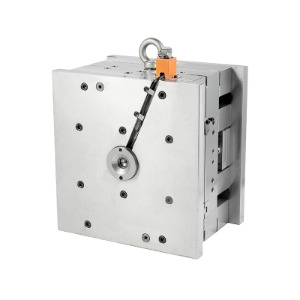 2025.10.17
2025.10.17
 News
News
In the world of manufacturing, precision is paramount, and this is especially true when it comes to the creation of Plastic Precision Molds. These molds are the backbone of the plastic injection molding process, producing a wide array of parts used in various industries. The standards for Plastic Precision Molds are not just guidelines but a reflection of the quality, durability, and performance expected from the final product.

Material Selection in Plastic Precision Molds
The standard to consider when discussing Plastic Precision Molds is the material selection. The choice of materials is critical as it directly impacts the mold's durability, heat resistance, and wear resistance. High-quality steel is often used due to its strength and ability to withstand the pressures and temperatures of the injection molding process. Additionally, the material must be able to maintain its integrity over time, ensuring that the Plastic Precision Mold can produce parts consistently without deformation or wear.
Design Specifications and Tolerances
The design specifications and tolerances of a Plastic Precision Mold are the second area that sets the standards. Precision in design is crucial for the mold to produce parts with the exact dimensions and features required. Tolerances must be tight to ensure consistency across all parts produced. This involves careful consideration of the part's function, the materials being used, and the molding process itself. Advanced computer-aided design (CAD) software is often employed to ensure that the design meets the strictest tolerances and specifications.
Manufacturing Process and Quality Control
The manufacturing process of Plastic Precision Molds is another independent area that defines the standards. This includes the techniques used to create the mold, such as CNC machining, electrical discharge machining (EDM), and wire electrical discharge grinding (WEDG). Each method has its advantages and is chosen based on the complexity and precision required for the mold. Quality control is also a critical aspect of the manufacturing process. Regular inspections and testing ensure that the molds meet the desired specifications and can produce high-quality parts.
Surface Finish and Polishing
The surface finish and polishing of a Plastic Precision Mold are essential for the quality of the parts it produces. A smooth surface finish reduces friction and wear, which can longer mold life and better part quality. Polishing is a meticulous process that can involve manual labor and specialized equipment to achieve the desired finish. The standards for surface finish can vary depending on the application, with some parts requiring a mirror-like finish while others may only need a matte finish.
Maintenance and Lifecycle Management
Lastly, the standards for Plastic Precision Molds include maintenance and lifecycle management. Even the molds require regular maintenance to ensure they continue to produce parts to the standards. This includes cleaning, inspection for wear, and timely replacement of parts. Lifecycle management is about understanding how long a mold can function before it needs to be replaced or refurbished. By tracking the performance and condition of Plastic Precision Molds, manufacturers can plan for maintenance and replacement more effectively, reducing downtime and costs.
The standards for Plastic Precision Molds are multifaceted, encompassing material selection, design specifications, manufacturing processes, surface finish, and maintenance. Each of these areas plays a critical role in ensuring that the molds can produce high-quality parts consistently. By adhering to these standards, manufacturers can achieve the precision and reliability needed to stay competitive in a global market. As technology advances, so too will the standards for Plastic Precision Molds, ensuring that the industry continues to evolve and meet the demands of the future.